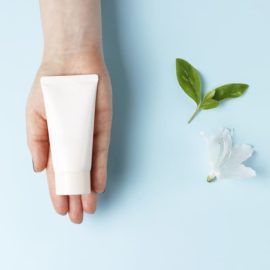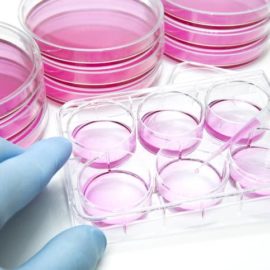Aging is a complex process. The degeneration of our cellular structures, from the surface of the skin to the telomeres at the very tips of our chromosomes, is impacted by numerous factors. External contributors like pollutants, sun damage, and stress accelerate the aging process, and even our genetic characteristics will have an impact on how we age.
In the beauty industry, the attitude to aging is changing. Instead of trying to stave off aging at all costs, the focus is shifting to aging well. In the place of bold (and often misleading) anti-aging claims, the industry is promoting a more holistic approach to dermal health and longevity. With nourishing, scientifically-proven actives combined with good physical health, diet, and emotional well-being, the emphasis is now on aging well, not anti-aging. These holistic changes have an impact on how our body ages at a molecular level, which we’ll discuss here.
Content
Telomeres and their role in the aging of the skin
Aging occurs at a molecular level in the chromosomes that compose our DNA. An important component of our DNA is telomeres. Telomeres are repetitive nucleotide sequences at the ends of a chromosome. These molecules protect the end of the chromosome from deterioration, like a plastic cap at the end of a shoelace.
Our cells replenish by copying themselves. This happens throughout our lives, keeping our skin, hair, nails, bones, and organs healthy. However, each time a cell copies itself, the telomeres get shorter. Eventually, the telomere length will reduce so much that the cell will be unable to protect the chromosome. This, in turn, causes aging. Therefore, telomeres are the aging clock built into every cell.
This aging process associated with telomere length and attrition has various hallmarks. Researchers have defined these characteristics as telomere attrition, cell senescence, genomic instability, epigenetic alterations, and stem cell exhaustion, to name but a few indicators (López Otin et al. 2013). However, the major challenge remains to examine how the connections between these hallmarks contribute to aging, with the final goal of targeting specific processes to improve health and longevity.
Slowing down telomere attrition
Telomere attrition is a natural process. However, this isn’t to say that we’re powerless to protect these important structures. According to research, exercise and a healthy diet can slow telomere attrition (Shammas, 2011). Particular emphasis is put on antioxidants, as telomeres are especially sensitive to oxidative stress. Furthermore, dietary and physical health play an important role in emotional health, thus helping to combat the stress factor that can speed telomere degeneration.
With this in mind, beauty is looking to molecular biology to develop products that slow the aging process at its root. For instance, Provital’s active Vitasource incorporates the botanical Scutellaria baicalensis, which inhibits cellular senescence through inducing the gene expression of human telomerase. Consumers can incorporate products containing this powerful active into their holistic wellness regime, as part of the cultural shift from anti-aging to well-aging.
Wellness supported by science
Although some brands may be reluctant to include references to molecular biology on their labeling, consumers are growing more accustomed to the terminology. According to market research conducted by Mintel, ‘glycation’ and ‘biomimetic’ are both terms related to biology and popular marketing angles. Other phrases follow a similar theme, such as ‘increasing cell energy’, which has been seen more frequently since 2010, while phrases mentioning ‘DNA’ or ‘telomeres’ grew 35% in 2012.
Subsequently, brands shouldn’t shy away from arming consumers with the facts. As consumers become increasingly sophisticated and more oriented towards wellness over anti-aging, brands should demonstrate their claims are substantive. Telomeres play a crucial role in how we age – but we’re not powerless to preserve them. Alongside new, well-aging lifestyles, consumers are looking for effective, scientifically-driven ways to care for their skin.
No comments yet
There are no comments on this post yet.





Leave a comment